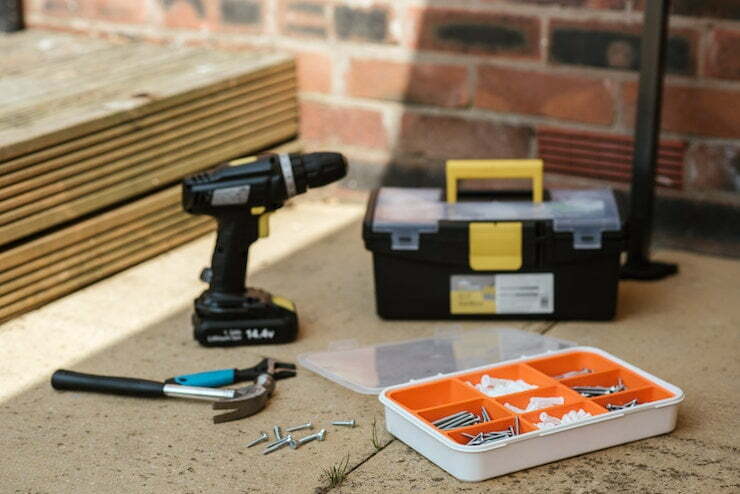Essential Tools for Flooring Repairs
When it comes to flooring repairs, having the right tools is essential. Without the right set of tools, you may find yourself facing a daunting task and a lot of unnecessary frustration. Whether you are a professional flooring contractor or a do-it-yourselfer, having the right tools for flooring repairs will ensure that the job gets done right the first time and that your floor looks great. we suggest you read the Cork Flooring Melbourne page for more details.
One of the most important tools for flooring repairs is a hammer. A hammer is one of the most basic tools in any toolbox, but it is also one of the most versatile. It can be used to drive nails into wood, to remove old flooring, and even to level out flooring if needed. When you are dealing with flooring repairs, a hammer should always be in your toolbox.
Another essential tool for flooring repairs is a drill. A drill is used to make holes in the flooring so that screws can be inserted into them. This is an important step in any flooring repair job as it helps to ensure that the screws are secure and will not be removed. When you are looking for a drill, you should look for one that is powerful and has a variety of different bits.
When it comes to flooring repairs, a saw can also be a must-have tool. Saws are used to cut through wood and other materials so that new flooring can be installed. Depending on the type of flooring you are dealing with, you will need different saw blades. For instance, a circular saw is best for cutting hardwood flooring, while a jigsaw is best for cutting laminate flooring.
In addition to a hammer, drill, and saw, there are several other tools that can be essential for flooring repairs. A level is a great tool to have, as it is used to ensure that the flooring is even and level. This is especially important when doing flooring repairs on a hardwood floor. A chisel is also a great tool to have, as it can be used to create gaps in the flooring so that new flooring pieces can be added in.
Finally, a vacuum cleaner is one of the most important tools for flooring repairs. Vacuums are used to remove dust and debris from the surface of the flooring, ensuring that the surface is smooth before repairs begin. It is important to use the right vacuum for the job as different types of vacuums are designed for different types of flooring.
Having the right tools for flooring repairs is essential for achieving the best results. With the right set of tools, you can make sure that your floor looks great and that the repair job is done correctly the first time. If you are a professional flooring contractor or a do-it-yourselfer, having the essential tools for flooring repairs will ensure that the job gets done right the first time and that your floor looks great.
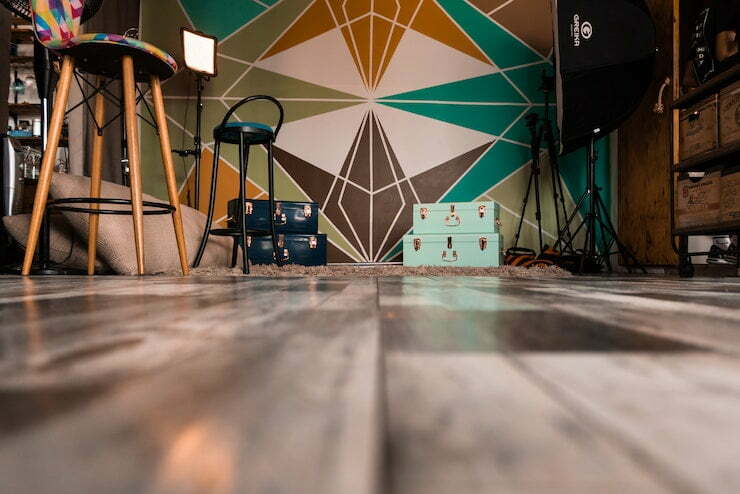
Common Causes of Flooring Damage
When it comes to home repairs, flooring damage is one of the most common issues that homeowners face. Not only does flooring damage decrease the overall value of your home, but it can also create safety and health hazards. As such, it’s important to understand the common causes of flooring damage and how you can prevent them from occurring in the first place.
The most common cause of flooring damage is water damage. Water can cause tiles and grout to discolor, swell, crack, or crumble. This can be caused by natural disasters such as floods, but it can also be caused by leaky appliances, plumbing, and other sources. To prevent water damage, it’s important to check for any leaky pipes or faucets and to check for any water spots on the floor. If you do see water spots, it’s important to contact a Professional For Flooring Repairs as soon as possible.
Another common cause of flooring damage is wear and tear. Over time, floors can become scratched, worn down, or stained from everyday foot traffic. To prevent this type of damage, it’s important to ensure that floors are properly cleaned and maintained on a regular basis. Vacuuming, sweeping, and mopping can help to reduce the amount of dirt, dust, and debris that can accumulate and lead to flooring damage.
In addition to wear and tear, pet damage is another common cause of flooring damage. Pet claws, urine, and vomit can cause permanent staining and damage to floors. To prevent pet damage, it’s important to ensure that your pet’s claws are trimmed regularly and that they are provided with an adequate amount of toys and activities to keep them from scratching or damaging your floors.
Finally, furniture and heavy objects can also cause flooring damage. Furniture can scratch, dent, and crack floors if it’s not moved regularly or if it’s too heavy for the flooring material. To prevent this type of damage, it’s important to ensure that furniture is moved regularly and that it’s not placed on floors that may not be able to handle its weight.
These are just some of the most common causes of flooring damage. As such, it’s important to be aware of these issues and to always contact a professional for flooring repairs if you notice any of these signs of damage. By doing so, you can help to ensure that your floors stay looking beautiful and remain safe for years to come.
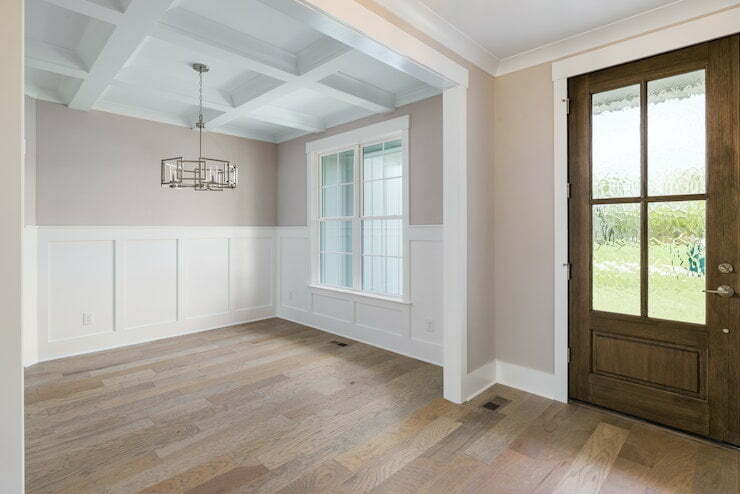
Identify Your Floor Type Before Repairing
It’s important to make sure you identify the type of flooring you have before attempting any repairs. Without this information, you can’t properly assess what type of repair is needed or which materials and tools are best suited for the job. Knowing the type of flooring will help you determine the best course of action for getting your floor back to looking its best. we suggest you read the Hybrid flooring Melbourne page for more details.
Whether you are dealing with a hardwood floor, laminate, tile, vinyl, or carpet, there are certain repair techniques that should be employed. For instance, hardwood flooring repairs typically involve sanding and refinishing, while tile repairs usually involve replacing broken pieces or grout. Vinyl and carpet repairs usually involve patching or stretching and reinstalling.
Before attempting any repairs, it’s essential to identify your floor type. If you’re not sure, you can always consult a professional who can assess the best way to proceed. Doing so will help ensure that you don’t waste time and money on ineffective repairs or materials.
Once you’ve identified the type of flooring you have, you’ll need to determine the best way to repair it. Depending on the type of flooring, you may need to purchase particular tools and materials in order to complete the repair. For example, if you’re dealing with a hardwood floor, you’ll need to purchase a sander, sandpaper, and a sealant. If you have carpet, you’ll need to purchase a special carpet repair kit or some carpet cleaner.
When it comes to repairing your floor, it’s important to remember that it’s always best to hire a professional. While there are some DIY repairs you can do yourself, it’s often better to have an expert who can assess the damage and the best way to repair it. A professional will also be able to help you determine the best materials and tools needed to complete the job.
No matter what type of flooring you are dealing with, it’s important to identify the type of flooring before attempting any repairs. Knowing the type of flooring can save you time, money, and hassle in the long run. When you’re ready to begin your flooring repairs, make sure you’ve identified your floor type so you can make the best decision on how to proceed.
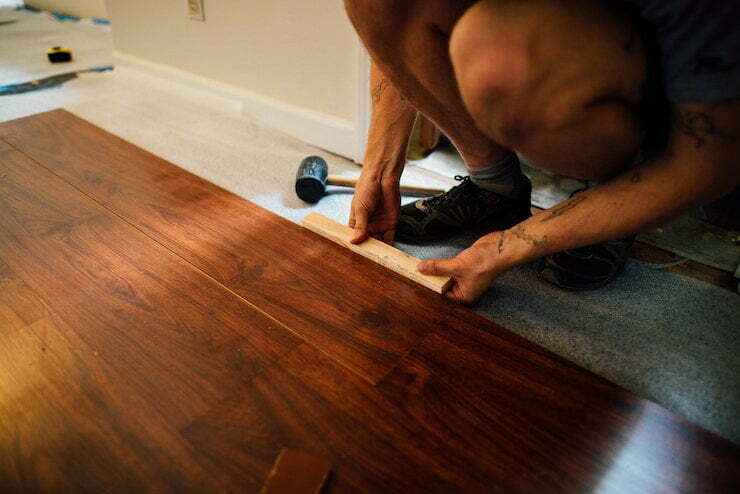
DIY Flooring Repairs vs Professional Services
Are you considering DIY flooring repairs or hiring a professional service? With so many options available, it can be hard to decide what’s best for your home. There are a few things to consider when deciding between DIY flooring repairs and professional services.
DIY flooring repairs can be a cost-effective option for homeowners who are willing to take the time to learn the necessary skills. DIY flooring repairs require a good knowledge of the tools and materials used for the job. Homeowners should also take safety precautions, as improper use of tools and materials can be dangerous. Additionally, DIY repairs often require more time than professional services.
On the other hand, professional flooring repairs can save you time and money in the long run. Professionals have the expertise and experience needed to do the job right the first time, and they can often fix issues quickly. However, professional services are usually more expensive than DIY repairs.
When deciding between DIY flooring repairs and professional services, it’s important to consider your budget and your skill level. DIY repairs can be a great option if you’re comfortable with the necessary tools and materials, but professional services are often the best choice if you’re looking for a long-term solution or if you need a job done quickly and correctly.
No matter which option you choose, be sure to research the company you choose for flooring repairs. Check reviews, ask for references, and make sure the company is licensed, bonded, and insured. This will ensure that you’re getting the best quality service for your money. we suggest you read the Hybrid flooring Melbourne page for more details.
Whether you choose DIY flooring repairs or professional services, make sure you’re prepared for the job. Take the time to research the tools and materials you’ll need, read up on safety precautions, and practice before you begin. With the right preparation and planning, you can ensure that your flooring repairs are done correctly and efficiently.
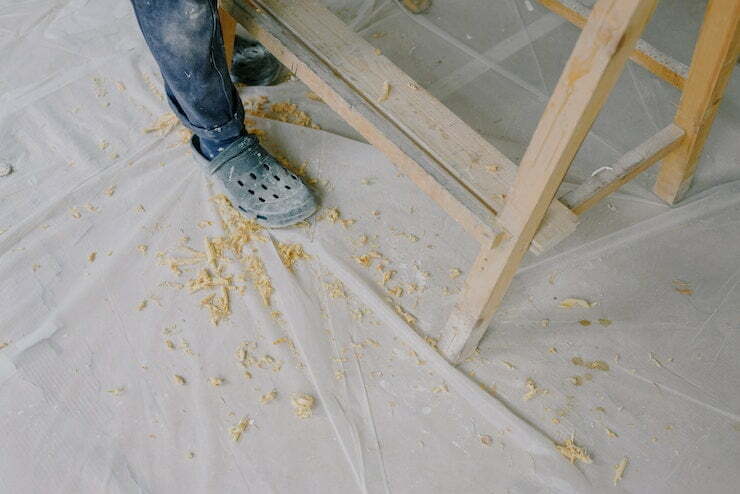
Simple Tips for Maintaining Your Floors
Keeping your floors in good condition should be a top priority for any homeowner. After all, flooring is one of the most visible aspects of any home and can drastically affect its overall appeal. From regular maintenance to flooring repairs, there are a few simple strategies you can use to ensure your floors remain looking great for years to come.
First, regular cleaning is key. Sweeping and vacuuming your floors on a weekly basis will help to remove dirt, dust, dirt, and debris that can accumulate over time. This can not only make your floors look better, but also help to extend their life. Additionally, you should also mop your floors every few weeks to really get them looking their best.
When it comes to flooring repairs, it’s important to take care of them as soon as possible. If you notice any issues with your flooring, it’s important to address them right away before they become worse. This could include replacing worn or cracked tiles, patching holes, or even replacing entire sections of flooring that have been damaged.
Finally, it’s important to protect your floors from damage. Invest in protective floor mats and rugs that can help to prevent scratches and dings. Additionally, consider applying a sealant to your floors every few years to help protect them from water damage, stains, and other potential issues.
By following these simple tips, you can help to maintain your floors and keep them looking great for years to come. Regular cleaning and maintenance, as well as timely flooring repairs, can help to ensure your home remains in top condition.
Clever Solutions for Unusual Flooring Problems
Flooring problems can be a tricky and expensive issue to deal with. From water damage to uneven floors, it can be difficult to know where to start when it comes to repairs. But with a few clever solutions, you can tackle even the most unusual flooring problems without breaking the bank. Here are some tips to get you started on your flooring repairs.
One of the most common flooring problems is water damage. Whether it’s caused by a leaking roof, plumbing or even a burst pipe, water can damage your flooring in no time at all. To combat this, start by addressing the source of the water. If the source is a leak, have a professional come in and repair the damage. If the water is coming from a burst pipe, you may need to replace the entire pipe or even repipe the entire area.
Another common problem is uneven flooring. This can be caused by a variety of things, including foundation problems, poor installation, or age. To fix this, you’ll need to level the flooring and then fill in any low spots. There are a few different ways to do this, including using a self-leveling compound or a screed.
The last flooring problem is scratches and dents. These can be caused by anything from furniture to pets. To repair these, you’ll likely need to sand down the floor and then fill in the scratches or dents. You may also need to refinish the floor to make it look new again.
No matter which flooring problem you’re facing, there are plenty of clever solutions to get the job done. From water damage to uneven floors, these tips will help you get your flooring repairs back on track. With a little bit of diligence and some crafty solutions, you can have your flooring looking like new again in no time.

